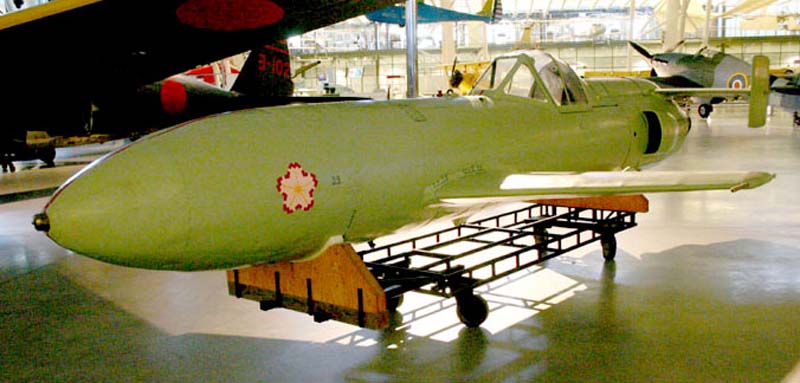|
HISTORY
Yokosuka
Naval Air Technical Arsenal
(海軍航空技術廠,
Kaigun
Kōkū Gijutsu-shō,
lit. Naval Air Technical Arsenal)
had many names, each depending on
the period of its existence, and the
circumstances at that time. Many of
the names were acronyms that were
derived from its military name or
designation, which changed from time
to time. The arsenal was sometimes
known as "Kūgi-shō"
(a contraction of "Kōkū
Gijutsu-shō"
空技廠).
The name Yokosuka prevailed however,
even though it referred to the
Arsenal's location at Yokosuka,
Japan.
The air arsenal's roots go
back to 1869 when the
Imperial Japanese Navy (IJN)
established a naval arsenal
at Yokosuka, about 13 miles
south of Yokohama on Tokyo
Bay. The arsenal provided
ship building, repair and
replenishment to the
Japanese Navy. It was also a
storage depot where
munitions and other assorted
supplies were brought as
they were purchased.
When a number of foreign
aircraft were purchased for
evaluation, the Navy brought
them to the arsenal for
processing. The arsenal
assembled the aircraft from
their shipping boxes, and
when assembled, they were
flown by the pilots who had
been sent abroad for flying
lessons and evaluate the
aircraft flown.
Modifications to these
aircraft were done as
weaknesses were found, or
when an improvement was
incorporated. To facilitate
this work, the IJN
established the Aeroplane
Factory, Ordnance Department
at the arsenal's torpedo
factory in May 1913.
The next year, the first
acronym was used was
Yokosho, a contraction of
"Yokosuka Kaigun Kōshō"
(Yokosuka Naval Arsenal).
The arsenal was renamed
"Kaigun Kōkū Shiken-sho"
(Naval Establishment for
Aeronautical Research) in
December 1919. The name
"Kaigun Gijutsu Kenkyūsho"
(Naval Technical Research
Institute) was assigned by
April, 1923, when the
arsenal was moved to Tsukiji
with several other Naval
support units. The entire
Tsukiji facility was
destroyed in the 1923 Great
Kantō earthquake. Several
names were used when the
navy began establishment of
the arsenal. Research was
started again in 1924 when
several aircraft were
evaluated. Under the command
of the newly formed Naval
Air Headquarters, the Kaigun
Kokusho (Naval Air Arsenal)
was formed at Yokosuka on 1
April 1932. A large amount
of draftsmen and Designers
were transferred from the
Hiro Naval Arsenal, ending
aircraft production there.
During World War II, the
arsenal was responsible for
the design of several IJN
aircraft, although the
arsenal itself did not
manufacture more than a few
prototypes of the aircraft
it designed. Its designs
were mass produced by
companies such as Aichi
Kokuki, Watanabe Tekkōjo
steel foundry, renamed in
1943 to
Kyūshū Hikōki
Kabushiki-kaisha
(九州飛行機株式会社,
Kyushu Aircraft Company Ltd.,
Kyushu Armaments, and the
Hiro Naval Arsenal (Hiro
Kaigun Kōshō,
which is often abbreviated
as Hirosho). Aircraft
designed by the arsenal are
usually designated by the
manufacturer's letter "Y"
for "Yokosuka".
SOURCE:
Wikipeda
|

